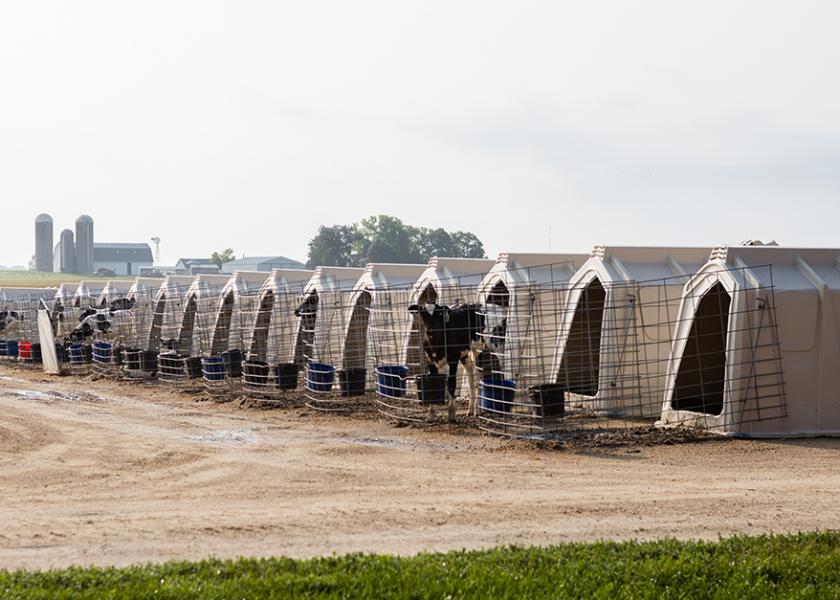Simplicity Plus Consistency Equals Calf-raising Success

There’s no single rearing system that is best for successfully raising newborn calves into healthy, productive replacements. But consistency and attention to detail are required – not optional -- according to a producer panel hosted by the Professional Dairy Producers of Wisconsin (PDPW). Their comments recently were featured on PDPW’s recurring video podcast, The Dairy Signal.
The three producers – two from Pennsylvania and one from Kansas – all emphasized that there was nothing “fancy” about their calf-raising programs. But following correct protocols and attending to every detail, every day, is critical.
“In general, babies don’t ever lie,” said Kansas-based calf manager Amanda Arata. “Usually, it’s what happens in the first 24 hours that impacts the rest of that baby’s life.” Arata is General Manager of Kansas Dairy Development, a contract-growing facility with a 55,000-head capacity that raises replacement heifers from a few days old to springers near Deerfield, Kan.
She said such early life care is critical to the job she and her team are able to do in their quest to return phenomenal heifers to their client dairies – animals that are capable of contributing to 100-pound-per-cow-per-day herd averages. “We’re pretty loud about it,” she shared. “We give a ton of feedback and have high expectations for getting a baby to us, and then they should have high expectations for what we do with that baby.”
Arata acknowledged that utilizing a custom grower is not for everyone, and that many dairies can and do successfully rear their own replacements. But the requirements for quality and consistent care do not change, regardless of rearing system.
Pennsylvania dairy producer, Tony Brubaker, said he learned that the hard way. Brubaker is a partner in Brubaker Farms, Mount Joy, Pa., a 1,340-cow dairy that raises all of its own young stock.
“We ran for about 10 years at a 2.5-3.0 percent mortality rate for everything born alive, until the last three-quarters of a year, when it jumped to 6 percent,” he said. “Ultimately, we discovered that somewhere in our training process for some new, young feeders, we missed a step about how disinfect and scrub buckets. So, a lot of times our baby calves were being fed in dirty buckets, and it was just inoculating the whole system.”
Brubaker said he believes the problem has now been fixed, after an overhaul of the farm’s protocols and more attention to training. “But it was a frustrating time for something that was so simple,” he stated.
Fellow Pennsylvanian, Walt Moore, President and Owner of Walmoore Holsteins, Inc., West Grove, Pa., has utilized both contract and self-rearing systems as his herd grew to its current size of 1,050 cows and 980 heifers.
He said regardless of who is raising the replacements, it is a process that critically affects the success of the entire dairy enterprise. “You can’t make a great cow out of a sub-par heifer,” he stated. “It starts on the first day of life, and you have to do everything right to allow that heifer to meet her genetic potential. I don’t think there’s one silver bullet – it’s a whole bunch of details, every step of the way.”







